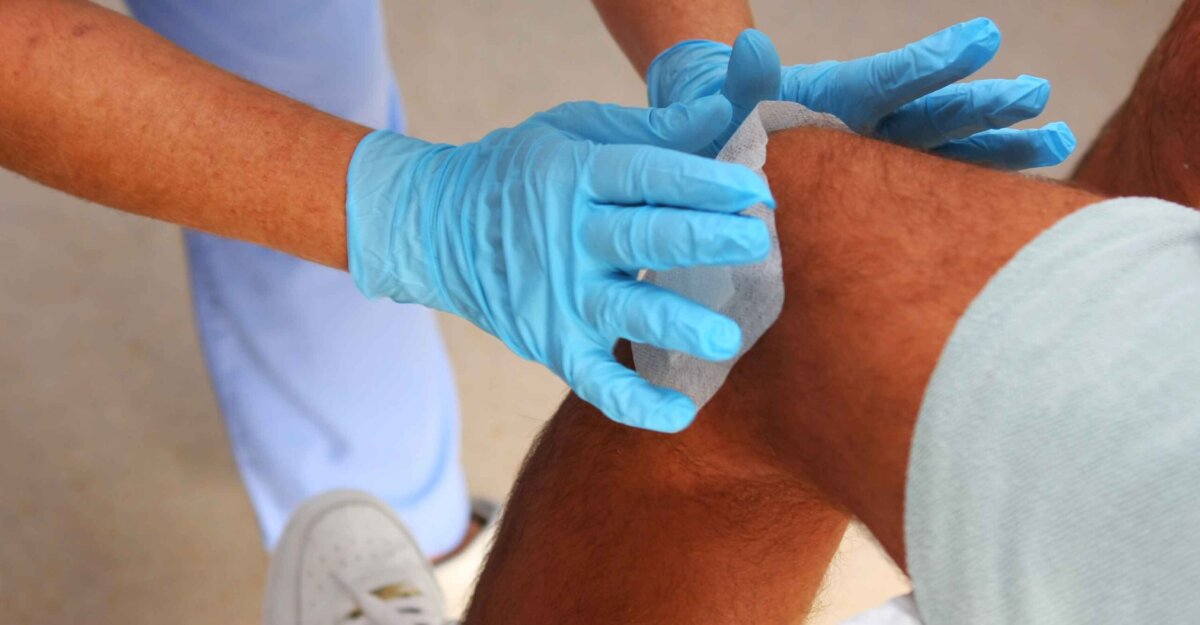Wound care is an ever-evolving specialty in which there is ongoing research, development, and use of new dressings and medications. Nurses and other clinicians are always evaluating wound care products for their effectiveness.
New products and medications deemed more efficacious can sometimes make older ones less favorable. However, there is one treatment option that has been around for a long time and still commonly used — a medication known as mupirocin ointment.
Mupirocin has been shown to be an effective wound treatment for hard-to-heal or chronic wounds. Its use can transform quality of life for patients. We spoke with two wound care experts to provide an overview on appropriate mupirocin ointment uses in wound care, along with the risks and benefits.
What is mupirocin?
Known by the generic name mupirocin and the brand names Bactroban, Centany, and Centany AT, “Mupirocin is an anti-infective that has action against Methicillin-resistant Staphylococcus aureus (MRSA),” said Paul Y. Liu, MD, Professor and Chairman of Plastic Surgery at Lifespan Hospitals and the Alpert Medical School of Brown University in Providence, Rhode Island.
Additionally, mupirocin is described as a topical antibiotic that comes in an ointment or cream form, said Shanna Newbold, MD, ABEM, ABWMS, Wound Care Physician at the Bangasser Wound Care Center at Redlands Community Hospital. “It has a unique structure in that is carbohydrate based.”
Typical mupirocin ointment uses
One of the mupirocin ointment uses is in the preoperative environment for patients awaiting surgery, when indicated.
“If a preoperative nasal culture is positive for MRSA, mupirocin is used in the patient’s nares for three days in a row. This reduces the carrier status of the patient prior to surgery and reduces their risk of developing a post operative infection,” said Liu.
Liu added, “Mupirocin is not a first-line treatment for wounds. It is only used if a wound is resistant to other forms of treatment. Mupirocin is used as a last option in wounds.”
Liu highlighted that there are two reasons for this. First, mupirocin often causes a burning sensation when used in a wound. “Patients complain it’s painful.”
Liu noted that the second reason is that, “Mupirocin is not recommended for use longer than two weeks as it increases the risk of developing a resistance to it.”
Newbold said mupirocin is commonly used in wound care for both acute and chronic wounds when specific bacteria are present. “It is often utilized as a strategy to help stop the spread or limit recurrent bacterial infections from MRSA and Streptococcus pyogenes bacteria (Strep).
Additionally, mupirocin is often used in wounds of different etiologies. It is used especially when there are concerns of increased bacterial burden due to either MRSA or Strep bacteria. “Mupirocin is usually well tolerated by patients and is typically applied three times a day,” said Newbold.
The use of mupirocin on non-traumatic wounds is an off-label use. “It’s on-label use is for secondarily infected traumatic skin lesions and infections, such as impetigo,” described Newbold.”
The benefits of mupirocin ointment
In addition to mupirocin’s unique antibacterial properties, Newbold discussed a recent study which said, “Mupirocin has the ability to promote wound healing by stimulating keratinocytes proliferation and increasing several growth factors.”
Newbold said generally, “Mupirocin is well tolerated by most patients and has a lower risk of causing skin irritation then other topical antibiotic medications.”
Lui also noted that two of the most immediate benefits of mupirocin are that it is readily available and cost effective.
Side effects and contraindications
According to Liu, one potential side effect that patients can experience is an allergic reaction to mupirocin.
Both Liu and Newbold said that the main contraindication with the use of mupirocin is when the patient is allergic to it or has an unusual reaction to any of its components. Newbold said that although allergic reactions are uncommon, they can include:
- Blistering
- Irritation
- Dermatitis
- Nausea
- Burning
- Pruritus
- Hypersensitivity reactions (including anaphylaxis)
Tips and reminders for clinicians
Newbold provided additional tips for clinicians when considering the use of mupirocin in their treatment plan:
- Avoid contact with the eyes.
- Use caution and consult before using this ointment in neonates and burn patients (especially if there is renal impairment).
- Do not use on intact skin on burn patients as this can cause more irritation.
- Mupirocin does not inhibit collagenase enzymatic activity. (This is always important to know if using Santyl.)
- Mupirocin is generally believed to be safe in older, younger, and breastfeeding patients. However, there are not many studies on this, so use with caution.
When reaching for mupirocin ointment, Liu said, it’s important to remember the following:
“Mupirocin is a useful adjunct treatment in wound care; however, I don’t want clinicians applying mupirocin to multiple wounds,” he said. “Its main use is for reducing the level of the MRSA pathogen. Do not to use mupirocin for longer than 14 days to reduce the risk of developing antibiotic resistance.”
The use of mupirocin ointment can be a beneficial treatment for patients with challenging wounds. By knowing how and when to use this product, you can help improve your patients’ health outcomes.
Take our engaging, evidence-based Wound Care Certification Courses for nurses, registered dietitians, physical therapists, and more professionals. Choose the format that suits you and get access to tools to help you ace your exam.
Get StartedWhat do you think?

